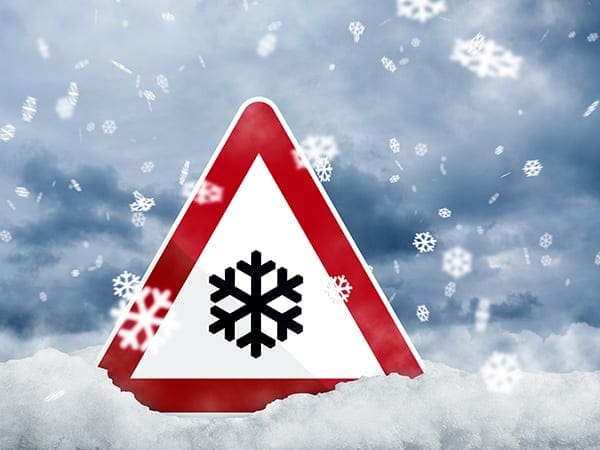
Winter weather is here, even if the temperatures in Nashville don’t always seem like it.
Be aware: Find out about the latest weather-related driving conditions and stay alert to changing road/weather conditions as you travel.
Be informed: Make informed decisions as you plan your day. Drivers can easily do this, by using their state traveler information services. Safe drivers know the weather, and their limits. If the weather is bad, remember ICE AND SNOW… TAKE IT SLOW.
Vehicle preparation: Remove any snow on your truck’s windows, lights, brake lights and signals. Make sure you can see and be seen. Check your truck’s tires, fluids, belts, and hoses. A breakdown is bad on a good day and dangerous on a bad-weather day.
Time: Leave plenty of time to reach your destination safely. It’s not worth putting yourself and others in a dangerous situation just to be on time.
First snow or ice: Drivers aren’t prepared for winter driving and forget to take it slow. Remember to drive well below the posted limit and leave plenty of room in front of your truck.
Limited visibility: Stay attentive, reduce speed and know what’s going on around you.
Get Set… Then Go:
Totally clear all the windows of snow and ice before driving. Just the movement of the truck and stopping can cause snow to slide onto the windshield or windows and limit your vision. There are many kinds of windshield deicing fluids that can be sprayed on glass to help melt ice. However, these generally contain an alcohol base, which not only melts the ice, but cools the glass. Subsequently, the moisture in the air may suddenly freeze over the glass surface, obscuring your vision.
Moisture in your breath may also cause ice to form on the inside of the windshield. Thus, before using a deicing fluid, warm the windshield with the truck’s defroster to prevent it from icing over again. Warm up the engine. Start your truck and let it idle for a few minutes before driving in order to prevent stalling. Then drive slowly until the truck is totally warmed up.
Prevent fogging. While you are warming up your truck, turn on the heater and the defroster to prevent sudden fogging when you pull out.
Consider using a block heater to keep your engine warm at night. Many mornings, the cold will make your truck hard to start.
See and be seen. When it is gray or snowing, turn the truck’s headlights on so you can see and be seen by surrounding traffic. Keep the headlights and taillights clean for added visibility.
Cold Weather Equipment:
Do not wait until it freezes or snows to load your truck with the equipment necessary to combat the elements.
- Put the following supplies in your cab:
- Flashlight
- Brush or broom for snow removal
- Extra fuses
- A rag for cleaning headlights or the windshield if you should run out of washer fluid
- Extra washer fluid
- Work gloves
- A small snow shovel
- A blanket and extra heavy clothing for emergencies (to include snow boots)
- Non-perishable food for emergencies
- A working cell phone
If You Become Stranded In a Winter Storm:
Do not panic: Always work slowly to avoid overexertion. Attempting to shovel even small amounts of snow may lead to a heart attack.
Stay in your truck: Do not attempt to find help by walking. You can quickly become disoriented in blowing and drifting snow. Your truck provides the best protection from the weather and you are more likely to be discovered by highway maintenance crews or law enforcement officers if you remain in your truck.
Keep fresh air circulating: Carbon monoxide can build up in a tightly closed cab, especially one sealed by blowing or drifting snow. Run the engine sparingly and open only the downwind window to provide proper ventilation.
Keep active: Clap your hands and move your arms and legs vigorously from time to time to stimulate circulation, relieve muscle tension and help keep you awake.
Turn on your interior lights: The light will help you observe others in the truck and make your truck visible to passersby.
Weather and Road Conditions Link:
The FHWA’s web site, contains links to information on weather and road conditions and the availability of travel web sites and 511. To view them click here.
Originally posted via the Idealease Safety Bulletin.
